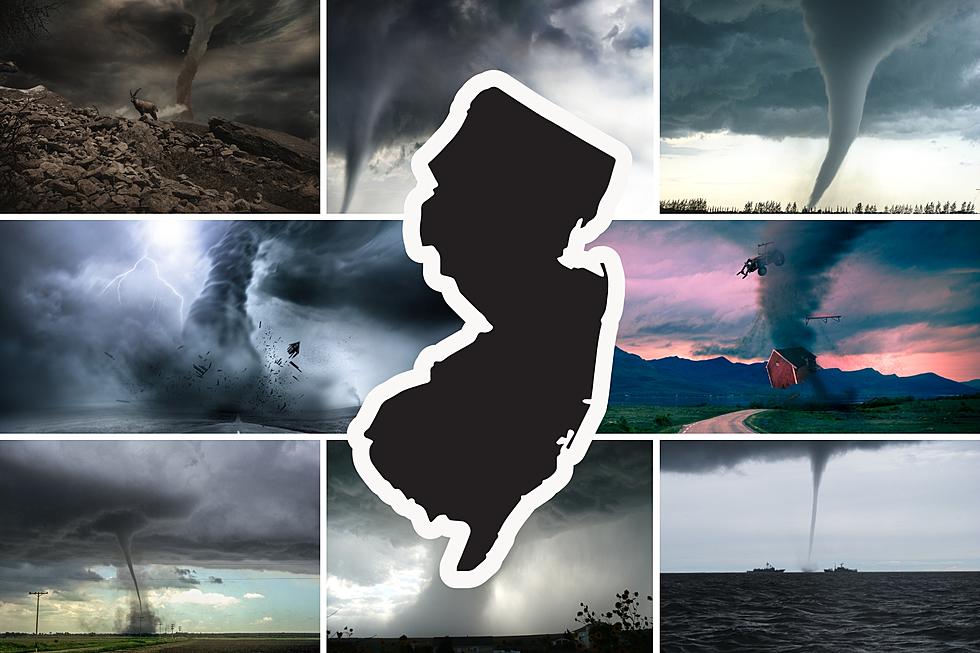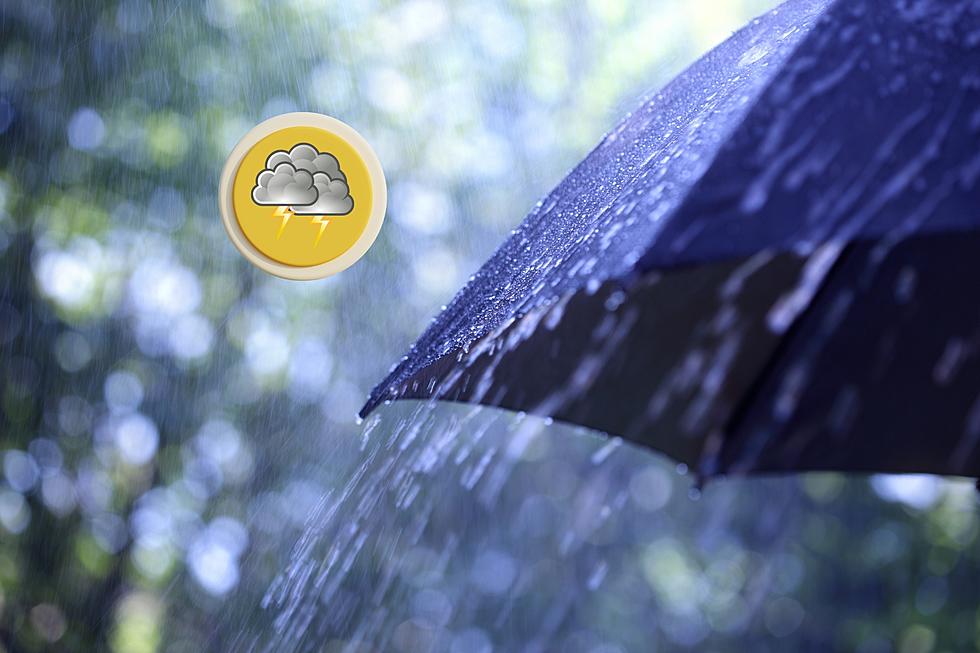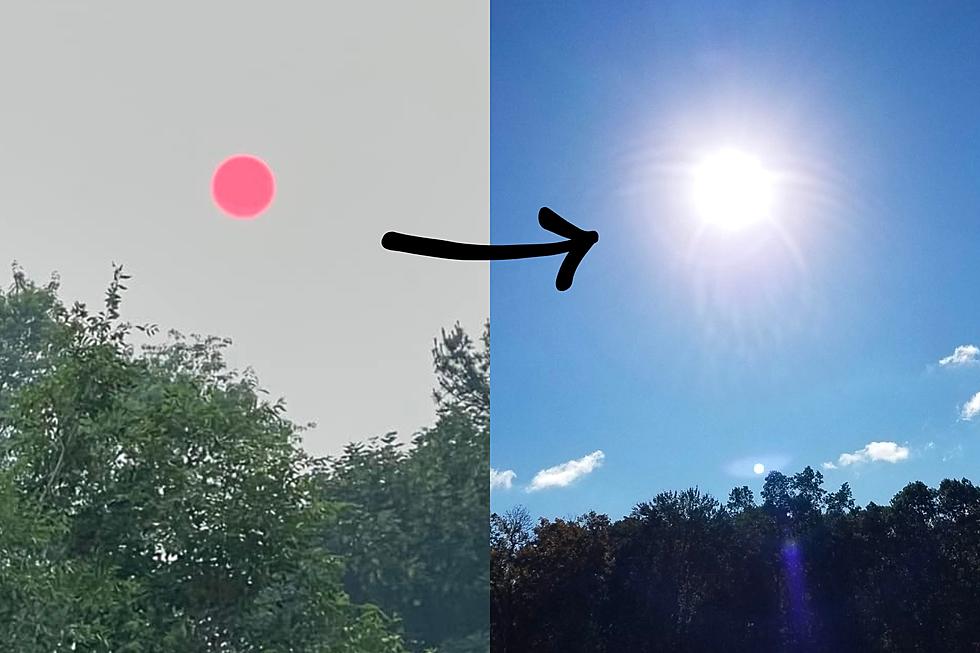
No, New Jersey is absolutely not ‘the new Tornado Alley’
What is Going On?!
Over the past eight days, New Jersey has withstood four separate rounds of strong to severe thunderstorms. Including three confirmed tornadoes, in Hunterdon, Gloucester, and Burlington counties. And there is one more chance of stormy weather coming up Tuesday evening.
Yes, it is summer. And this is New Jersey's prime thunderstorm season. But yikes, the constant threat of tornadoes and heavy rain and damaging winds and hail has been a bit overwhelming.
And I am not just talking about August 2023. We are in a very active era here in New Jersey, for tornadoes in particular. According to the excellent Tornadoes in New Jersey: 1950 to Present web site by the NJ State Climate Office, 2023 is now tied with 2021 as the state's second most tornadic year on record.
And let me remind you... There are still 5+ more weeks of summer, including the peak of the Atlantic hurricane season yet to come.
"Tornado Alley" has been used for decades to describe the area in the middle of the United States with peak tornado frequency. It loosely includes pieces of the Midwest and Great Plains. In recent years, a new surge in tornado numbers in the Southeast has brought about the term "Dixie Alley".
There are some out there — including a few of my colleagues in the meteorology world — who have hypothesized that New Jersey may be part of a "new Tornado Alley". Suggesting that the prime area for tornadic thunderstorms is shifting east.
In my expert opinion, that is total baloney.
Let me give you three reasons why New Jersey is not (and never will be) part of the revered Tornado Alley, and why such a suggestion is nothing but hyperbole. I also want to offer a cautionary tale about why the tornado uptick is concerning.
Great Plains = Tornadoes
Did you know that the United States experiences more tornadoes than any other place in the world? By far. It's not even close. We just have the perfect combination of hot air, cold air, moist air, and dry air colliding together to form small-scale areas of intense updraft and rotation. Nationwide, we average 1,200 twisters annually.
According to the Office of the New Jersey State Climatologist, NJ averages two tornadoes per year.
New Jersey is way down the list of the top states in the U.S. based on average annual tornado count:
1.) Texas — 155
2.) Kansas — 96
3.) Florida — 66
4.) Oklahoma — 62
5.) Nebraska — 57
38.) New Jersey — 2 (tie)
Of course, four of the last five years (2019-2023) have been above that average mark. If we look at the 2021 tornado count, a particularly active year for New Jersey, the top states look like this:
1.) Iowa — 146
2.) Texas — 103
3.) Tennessee — 97
4.) Alabama — 92
5.) Mississippi — 88
28.) New Jersey — 13
That's right. In the second most active year on record in New Jersey, we were not even in the top half in the United States. NJ only saw 0.8% of all the tornadoes in the country. Even on a "tornadoes per square mile" basis, New Jersey ranked 8th for 2021.
Hands down, Tornado Alley (and Dixie Alley) sees more tornadoes than New Jersey every single year, by an entire order of magnitude. It is not even close.
The Statistics are Skewed
Counting and rating tornadoes is a rather subjective science. It was much improved in 2007, when the United States adopted the Enhanced Fujita Scale, assigning a rating between EF-0 and EF-5 to each confirmed tornado, based on specific damage indicators.
Another important milestone is the implementation of dual-polarization radar, between 2011 and 2013, which gives forecasters and researchers a much higher-resolution view of thunderstorms associated areas of rotation.
Before those two improvements? Spotting tornadoes was much more challenging. Therefore, formal storm surveys happened far less often.
Did we miss counting some tornadoes because of poor remote sensing quality? Probably.
Furthermore, we only have "detailed" weather records on file dating back to 1950. Tornadoes obviously happened before then — but the documentation was spotty, at best. The Storm Events database from the first half of the 20th century heavily skews toward populated areas. (Since that's where people could see the funnel cloud and/or report the aftermath to authorities.)
Did we miss counting some tornadoes that occurred in remote, rural areas and were never reported? Absolutely.
Therefore, the "number of tornadoes" statistic is skewed pretty badly, especially the further back in history you go. That makes it hard to say anything is changing. (Like a shift in the geography of "Tornado Alley," for example.)
There Are Other Things to Worry About
In the 72+ years of detailed record keeping, do you know how many deaths in New Jersey were caused by a tornado?
One. According to the NCEI Storm Events database, a woman was killed on October 27, 2003 when a weak F-0 tornado in Hainesport, Burlington County tossed a 9" tree limb onto her car.
The official list shows 21 additional NJ storms throughout history that caused injuries. And the majority of confirmed tornadoes cause property damage too.
To be clear, I am not trying to downplay the seriousness and potential danger of tornadoes. Just demonstrating that truly devastating tornado outcomes in New Jersey are relatively rare. Especially considering that tornadoes are a microscale phenomenon, on the scale of feet instead of miles.
I make the argument that New Jersey faces a far greater threat of deaths, injuries, and/or property damage from other weather dangers. That includes flooding, wind, lightning, storm surge, heavy snow, extreme heat, and extreme cold.
Conclusion
New Jersey does see tornadoes, on the order of "rarely" to "occasionally". But the frequency and intensity of NJ twisters is nowhere near that of other areas of the country. So declaring the great Garden State as "the new Tornado Alley" is just wrong.
However, the point of increased severe storm activity is still valid. Let's keep in mind the old adage: "A rising tide lifts all ships."
The recent uptick in tornadoes here in New Jersey mirrors a trend toward more active, dramatic weather both nationally and internationally. It exactly follows what we know about the long-term, large-scale effects of climate change: The data shows we are trending toward more global extremes: Hotter heat waves, colder cold snaps, more intense and more frequent storms, longer-lasting droughts, etc.
(Note: Despite the certain backlash I will get for even mentioning "climate change," I want to make it clear that I am not evangelizing about its causes, adaptation and mitigation strategies, climate model solutions, and/or politics here. The direction and magnitude our climate is shifting is very clear, and those effects go way beyond "global warming".)
Rest assured, whenever there is a tornado or other severe weather threat to New Jersey, our weather, traffic, and news teams will be here to cover it from top to bottom, from start to finish.
A tornado's rapidly approaching - what should you do?
Dan Zarrow is Chief Meteorologist for Townsquare Media New Jersey. Follow him on Facebook or Twitter for the latest forecast and realtime weather updates.
11 reasons why storm chasing in NJ is a very, very bad idea
More From SoJO 104.9 FM










